https://edithsstreets.blogspot.com/2012/04/pymmesbrook-pymmesbrook-flows-eastwards.html
The
Cambridge Hotel and Off Licence. Demolished when the roundabout was upgraded.
Weir
Hall Library. Demolished when the roundabout was upgraded
Public
toilets. Demolished when the roundabout was upgraded
Hollywood
Gardens. Sited on the site of Hedge Lane
Gravel Pit given to Edmonton Borough Council in the 1930s for use as a public
park and developed as Tatem Park. This ornamental garden was laid out on the
level part of the site in the south some time later. The entrance has gates
with red-brick piers and railings. In 1983 a central area was developed as a
nature park with over 1,000 trees plus wild flowers and native grasses. On the corner with Great Cambridge Road is a plaque saying
“These Gardens were opened on 21st June 1958 to honour Alderman A.J.G.
Hollywood ex-Mayor of Edmonton”.
Wyerhall
Nurseries. Market gardens on the land to the east of the road before housing
developments.
Wyer-hall. An old house which took its name, from a family who owned property in Edmonton in the 14th. In the late 16thit
belonged to Jasper Leeke, Esq. and it was later leased to the Huxley
family. The site of the medieval house is not clear since nothing of
that date was found on the site of the later house. A house was built by
George Huxley in 1611 and this date was displayed in the house. Musket
shot in the walls led to an idea that this originated from the Civil War
.It was later used as a boarding house and demolished in 1818. The site
became a market garden, and a wall and outbuildings survived into the
20th.
Hedge
Lane
Tatem
Recreation Ground. Tatem Park is on the
site of Hedge Lane Gravel Pit owned by the Harman sisters who gave the site to
Edmonton Borough Council in the 1930s for use as a public park. It was opened
in 1938 on an informal area made out of the quarry. There is a plaque which
says “This ground was opened by Councillor R.A. Young
Chairmen of the Edmonton Urban District Council 1936-7 on the 5th May 1937 In
memory of James George Tatem the last of the Huxley-Tatem’s of Weir Hall.
Presented by his nieces Ellen & Margaret Harman
Hermitage
Lane
The
Hermitage. The Hermitage seems to have been a house adjacent to Weir Hall. It too had a moat along one side.
Wier Hall. With moat and boat house 1914. House
was built on the current site of the park. It was used as a nursing
home and then a boys' school and was demolished in 1934. This house was
surrounded by a moat, averaging 30ft. wide. The banks slope upwards
towards the centre of the interior site, where the house stood. It is
fed by Pymmes Brook.
Wier Hall park. Strange park with mounds and hollows. Are these the remains of the moats around Wier Hall and the Hermitage or spoil heaps? On maps during the period of the Great War there appears to be a complex of small buildings on the northern end of the site
Sterling Way Open Space. Impenetrable woodland
https://ezitis.myzen.co.uk/stdavids.html
| LOST HOSPITALS OF LONDON | |||
St
David's Hospital
Millfield
House, Silver Street N18
|
|||
|
Medical
dates:
Medical
character:
|
1917 - 1971 Epilepsy |
||
|
Millfield House was originally
built in 1849 as an orphanage for children of the Strand Poor Law
Union. An infirmary was added in 1874.
At the beginning of WW1 the building was used to house Belgian refugees. In 1917 it was sold to the Metropolitan Ayslums Board, who used it as a hospital for 300 male 'sane epileptics' (the Edmonton Epileptic Colony). The female equivalent was St Faith's Hospital in Brentwood. Control of the hospital passed to the LCC in 1930. It was renamed St David's Hospital, when it had 328 beds. It became a regional centre for epilepsy and, in 1960, had 271 beds, all for epileptic patients. It was planned to close the Hospital in the late 1960s and redevelop the site for mentally handicapped patients. But public policy changed and the project was never carried out. St David's Hospital closed in 1971 and the patients were transferred to St Faith's Hospital. Present
status (March 2008) |
|||
 Millfield House is now a Grade II* listed building. 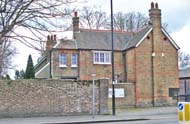 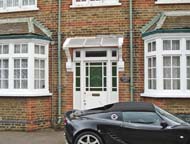 The Grade II listed Lodge from Silver Street (left). The entrance to 'Saint David's Lodge' (right). 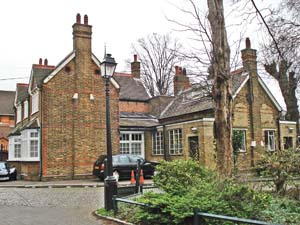 The Lodge from within the garden. 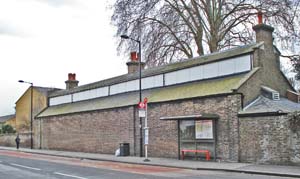 A tall, narrow, clerestorey-roofed building behind the wall - previously an outbuilding for the orphanage school 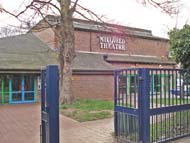 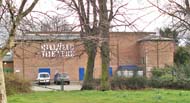 The Millfield Theatre (left). The west side of the theatre seen from across the garden (right). 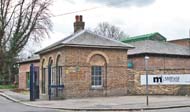 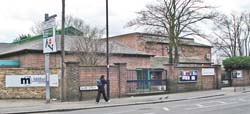 The gatehouse (left) and the west wall (right). |
|||
| References http://en.wikipedia.org www.1900s.org.uk www.aim25.ac.uk www.british-history.ac.uk www.britishlistedbuildings.co.uk (1) www.britishlistedbuildings.co.uk (2) www.parksexplorer.org.uk |
|||
| Return
to alphabetical list Return to home page |
|||







No comments:
Post a Comment